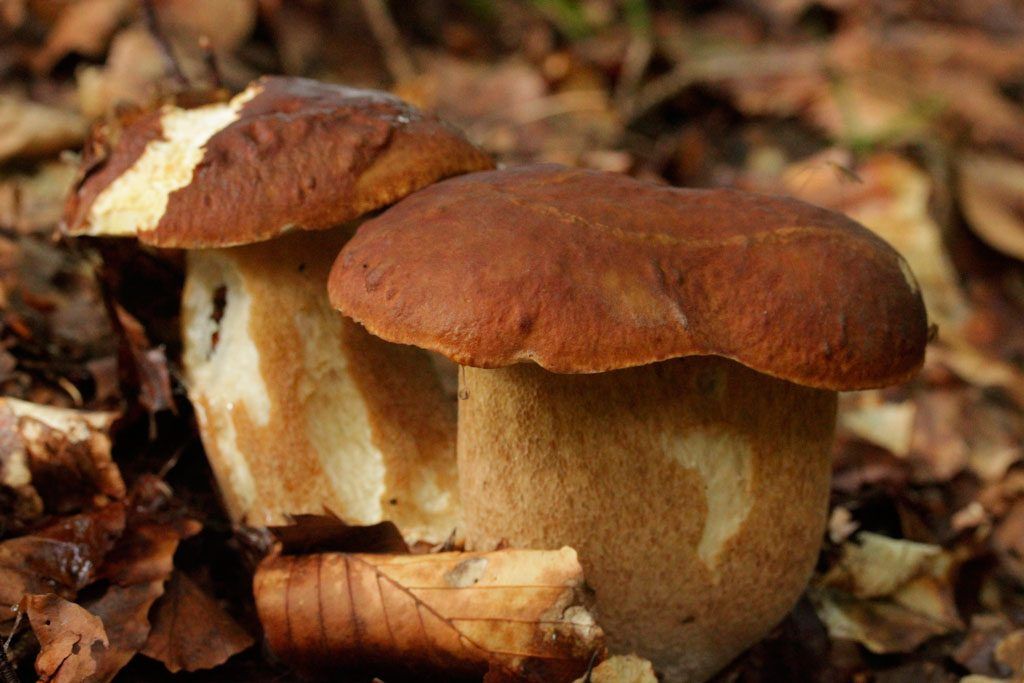Types of boletus
8 years ago · Updated 6 months ago

Porcini are one of the most widely used mushrooms in today's cuisine. Their versatility, texture and flavor make them an ingredient in a wide range of recipes.
Cèpes are characterized by the absence of lamellae like the vast majority of mushrooms, but of more or less compact longitudinal tubes that form a kind of sponge they use to release their spores. What's more, there are very few toxic and none lethal varieties, and the fact that they have tubes instead of lamellae makes them very identifiable.
But not alledible boletus are equally valued and equally well known. We're going to list those that can be considered the best edible boletus.
Excellent quality edible boletus
The 4 most widely consumed, sought-after and harvested species of edible bolets are edulis, pinicola, aereus and reticulated or summer. All are considered excellent edibles.
The most notable difference between them is the color of the cap. In the case of boletus aereus, the cap is darker brown, even almost black. Boletus pinophilus tends more towards reddish tones, while boletus edulis takes on an ochre-brown hue.
In the case of summer boletus, the cap takes on a slightly lighter, hazelnut-like hue.
The color of the pores will also help us differentiate them from other, lesser boletus. In all four, it starts out white or creamy in color, turning to yellowish and greenish tones as they grow.
Boletus edulis
This is undoubtedly the most famous and sought-after boletus. It is characterized by its white flesh and the viscosity of the cap if there is moisture. The ochre-brown hue and white line on the outside of the cap help us to differentiate it. It's a very common boletus
Boletus reticulatus
Also known as boletus aestivalis or summer boletus due to the date of appearance. Its cuticle has a nutty, uniform hue. Its flesh is white and its foot has a highly visible reticule.
Boletus pinophilus
Also known as the pine boletus or pine boletus, it prefers pine forests to fruit. Its cap takes on reddish and mahogany hues. In the foot, the network is the same. The flesh under the cuticle has a reddish hue.
Boletus aereus
It has the darkest cuticle, almost black, with a few slightly lighter spots. Its flesh is white. Its stalk also has dark tones. It's the most aromatic of the 4.
Edible but lower-quality boletus
Apart from these 4 well-known edible bolets of excellent quality, there are others that are also much appreciated in cooking and much less known to most
Boletus erythropus
It grows in coniferous forests in summer and autumn. It often shares the habitat with boletus edulis. It's a good edible after cooking, as raw it can cause gastric problems
Boletus regius
This is a rare species, so it must be protected. It grows in oak and beech forests in summer and autumn. It is often easily attacked by insects.
Boletus spretus
This is not a very common species. Its cap has a very strong pink color that even turns red or pink. It grows in autumn under cork oak, chestnut and oak.
Boletus impolitus
Not very common. It lives near deciduous trees, mainly oaks and cork oaks. Although it's edible, it's advisable to discard the foot because of its strong odor
Boletus appendiculatus
It grows under chestnut, oak and cork oak trees in late summer and autumn. To cook it, you need to throw away its foot.
Other edible boletus
Boletus fechtneri
Its foot has a pinkish color in its central part. A thermophilic species that grows in deciduous forests from summer to early autumn.
Boletus queletii
Does not have a network on its foot. In its var. Lateritius its brick-red color and red foot base are very characteristic. It grows from late summer to early autumn under beech and oak trees.
Boletus fragans
It prefers to mycorrhize with mature trees, chestnuts, cork oaks and oaks. It grows gregariously with several specimens growing together
And you, do you know another edible herb? Let us know and share this article if you found it interesting

Te pueden interesar